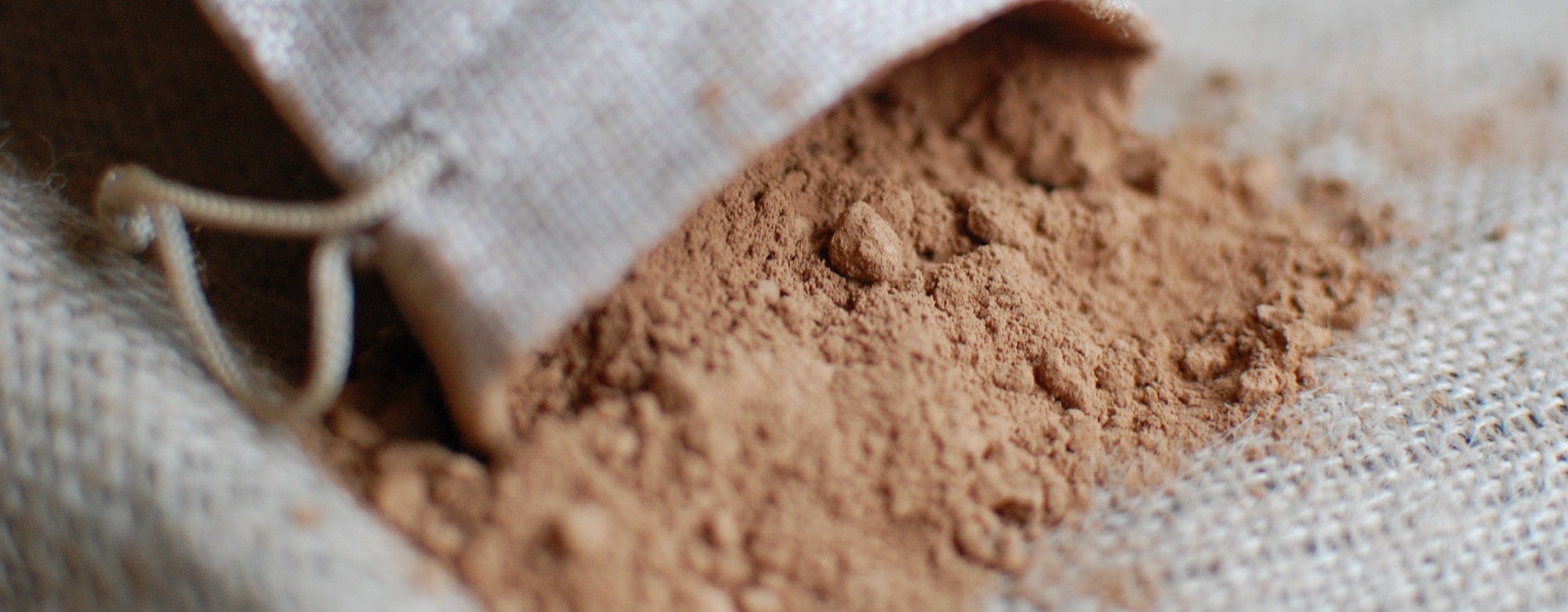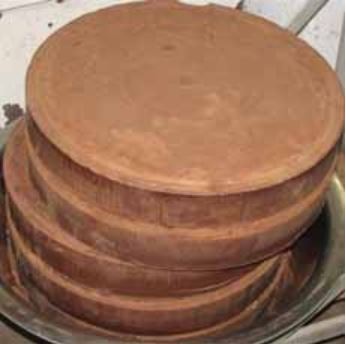
A bit of history
Most people probably think of cocoa as cocoa powder. After all, next to chocolate, I would say the second most famous cocoa product.
Its production started in 1828, when the Dutch chocolate manufacturer Casparus van Houten patented a vertical cocoa powder press. The van Houten family continued in the chocolate industry and, in fact, still appears on the market, albeit as part of a larger corporation. However, van Houten’s pressing method is the way of making cocoa powder to this day.
Production process
When we start with cocoa beans, they are roasted, peeled and crushed, so thoroughly that they become a mushy mass. More precisely – cocoa mass. It is still half made up of a cocoa butter, so just grinding the beans does not create a powder. Here comes van Houten’s method – pressing. The cocoa mass is compressed to obtain two separately usable products – cocoa butter flows out on the sides of the press and the cocoa powder remains in the press. Thus, huge pressed cakes (pictured) are taken out of the press, but they are further crushed into a fine powder. As cocoa butter is the most valuable thing in cocoa, this step makes cocoa powder a very cheap commodity.

Dutch and Natural
Is that all? Not quite. Van Houten was also a chemist, figuring out how to make the powder dissolve better in water and fat. He added alkali salts – alkalizants – to it (or rather to the uncompressed cocoa mass), which impart this property to the cocoa powder. It is actually baking soda, ie. sodium bicarbonate – a harmless compound. The cocoa powder also darkens with these alkalizants.
This process is called Dutch process and cocoa powder then Dutch cocoa powder. Opposite it is Natural cocoa powder, to which alkalizers are not added. As a result, it is also lighter, which makes it quite familiar with Dutch cocoa.
Fat content
There is another quantity that is monitored for cocoa powder, and that is the content of cocoa butter that remains in the powder after pressing. It is usually 11%, but we can also find cocoa powder with a content of 23% cocoa butter. This is then tastier, but at the same time, of course, a little less dietary and, thanks to the higher proportion of butter, usually more expensive.
The most common and basically the only one available in supermarkets is Dutch cocoa, which contains 11% cocoa butter. It’s logical – it’s cheaper to buy (the less butter, the cheaper) and dissolves better in water or milk. However, it is a pity, I would like to choose between this classic and the natural variant without additional white powder, ie. baking soda. And when it comes to worse dissolution, that’s the least of a problem, just use hot water. I deal with this in an article devoted to the preparation of a cocoa drink.